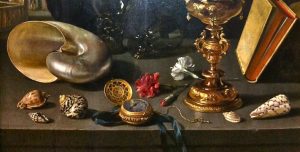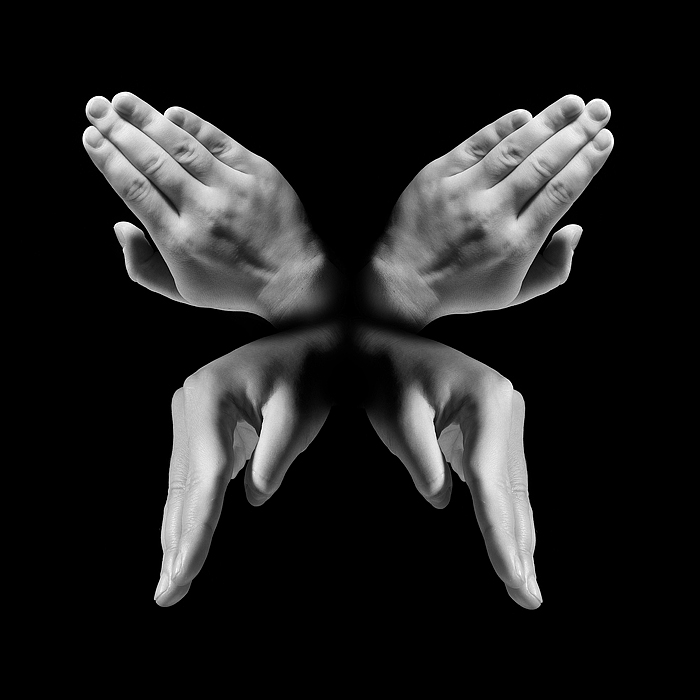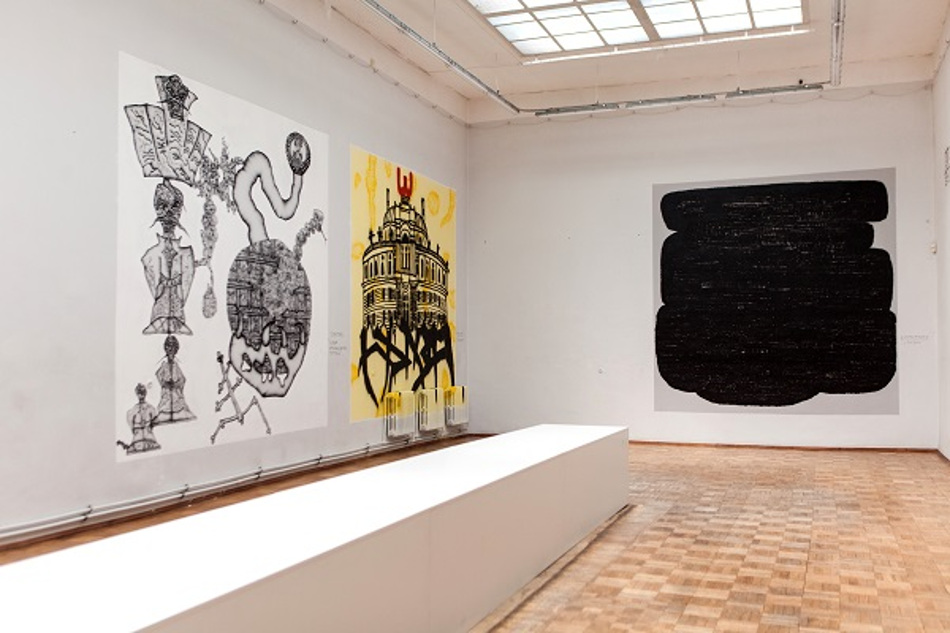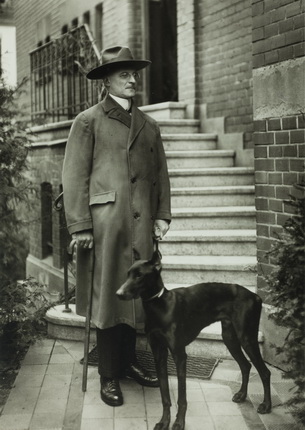The shell is a symbol in art: the blessed gift of the seas …
 Shells, melancholy collected on the shore under the gentle splashing of the waves – the main souvenir, which is usually brought from the sea. Having become more mature, we appreciate not only the beautiful creations of mother nature, but also their embodiments in everyday life and art. Oh, how elegant porcelain is good, even if it is no longer Meissen, and what marvelous scenes in the pictures! And the shells there is not a simple detail.
Shells, melancholy collected on the shore under the gentle splashing of the waves – the main souvenir, which is usually brought from the sea. Having become more mature, we appreciate not only the beautiful creations of mother nature, but also their embodiments in everyday life and art. Oh, how elegant porcelain is good, even if it is no longer Meissen, and what marvelous scenes in the pictures! And the shells there is not a simple detail.
“Venerina” scallop
Shells were loved by the creators and the public during the times of antiquity: their images were quite a popular element in mosaic decorations. Moreover, the sublime: a neat rippled sink, became not only a symbol of the water element, but also an attribute of female deities, first of all – Aphrodite. Nacre was revered as the divine envelope of the Pennior. Antique tradition adopted by the artists of the Renaissance. On the canvases of Poussin, Tiepolo, Titian and Botticelli, the goddess of love, as a rule, stands in the middle of the sea in a large shell, but in some cases holds a scallop in her hand – a symbol of the feminine.
It is not surprising that the symbolism of the shell, associated with the birth of life, imperceptibly passed into the art of Christianity. In the period of the early Renaissance, you can find an image of Mary above which head the architectural detail that follows the shape of a shell (Fra Filippo Lippi. “Madonna and Child”). In the future, the echo of this plot filled with the sacral meaning the semicircular overlap of the altar – the conch (Greek konche – “shell”).
In the 12th century iconography, the sea ribs appeared as an attribute of the apostle James, older (Sv. Jacob. Rouen. Normandy.1270; Saint James. Unknown master from Würzburg. 1475. Dijon; Carlo Crivelli. Saint Jacob, senior. 1472. Brooklyn Museum) and other Christian saints who have completed sailing for the purpose of worshiping overseas shrines. So the image of the mollusk also became the emblem of the pilgrims.
Shells, like fish, traditionally symbolized baptism. This explains the fact that in the plots telling about the baptism of Jesus, John the Baptist was often depicted with a sink (Raphael, El Greco), a familiar clam can also be seen on church stained glass windows.
However, lust precedes birth, and in the tradition of the Northern Renaissance the double shell was transformed into a symbol of marital infidelity (Hieronymus Bosch. Garden of earthly pleasures).
All – vanity of vanities
The emergence of such a genre as still life Vanitas (lat. Evitas, literally— “vanity, vanity”), has made its own adjustments to the symbolism. Such pictures were intended to remind of the transience of life, the futility of pleasure and the inevitability of death. The greatest popularity of Vanitas acquired in the XVI – XVII centuries. in Flanders and the Netherlands. Since in the traditions of this genre each item had its own place and role in the plot, then the shells (like the remains of a once living being) carried a semantic load along with weighty folios, human skulls, feathers and inkpots, watches and so on … All the bustle … resembled depicted objects of inanimate nature. For artists (Peter Klaas, Jan Pauvel Gilemans), these still lifes were a warning against vanity and frailty. Vanitas, as a rule, were located in the office in order to give the owner solidity.
The value of the mollusk depicted could change depending on the style of the still life. And if Christian symbols (bread, wine) were involved in the picture, then the opened shell in this case meant a soul ready to leave the earth’s shell.
In the 17th century, the collecting of shells, which appeared in Holland, spread to other European countries. Merchant ships, plowing the seas and oceans, constantly amazed by the novelties of unprecedented outlines and by the end of the XVII century shells and other maritime wonders were already a prominent trade item. The nautilus shell covered with nacre was revered with special attention. This handsome sea man was revered as a symbol of growth and renewal, as his “house” grows throughout his life. In the spiral shell they even saw the image of the Universe – the model of the cosmos or the “lunar spiral” – the rising and setting Sun, and in its proportions calculated the “golden ratio”.
Luxurious specimens of sinks attracted the attention of artists in the future. In Henri Matisse (The Sink on Black Marble, 1940), the sink, as a product of nature, is contrasted to inanimate nature (cups, coffee pot); Queen Art Deco Tamara Lempitski – is, rather, an allegory of the vulva – pink and shiny.
British sculptor Mark Quinn was interested in the gifts of the ocean because they accumulate past and present. At the exhibition “Archeology of Art” (The Archeology of Art. 2013), the sculptor presented giant shells, cast in bronze and exactly the same as the original creations of nature. The enormous size of the exhibits allow the viewer to view the mollusk to the smallest details.
“Oysters on a platter in the ice …”
The taste of oysters saw through the Stone Age. They were on the table of the Roman emperors, as well as ordinary people up to the Middle Ages.




